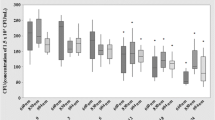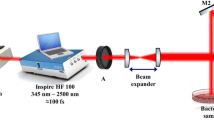Abstract.
Low frequency ultrasound (LFUS) significantly enhances skin permeability to a variety of drugs; however, its bacterial effects have not been well studied. Staphylococcus epidermidis organisms were grown and standardized to 105 cfu/ml 24 h prior to investigation and suspended in normal saline. LFUS was applied with two probes immersed in the bacterial suspensions over a range of suspension volumes, intensities, and exposure times. The suspension temperature was measured, and a sample was removed, streaked onto blood agar plates, and incubated at 37°C for 24 h. Quantitative bacterial counts were then obtained. LFUS resulted in significant reductions in bacterial counts that correlated with fluid temperature. Probe size and ultrasound intensity appeared to affect bacterial counts, but were also correlated with temperature. Bacterial growth was minimal with temperatures exceeding 45°C. While LFUS can reduce bacterial counts, these conditions have the potential to cause burns in humans.
Similar content being viewed by others
Author information
Authors and Affiliations
Additional information
Received: 21 August 1998 / Accepted: 29 September 1998
Rights and permissions
About this article
Cite this article
Singer, A., Coby, C., Singer, A. et al. The Effects of Low-Frequency Ultrasound on Staphylococcus epidermidis . Curr Microbiol 38, 194–196 (1999). https://doi.org/10.1007/PL00006786
Issue Date:
DOI: https://doi.org/10.1007/PL00006786




